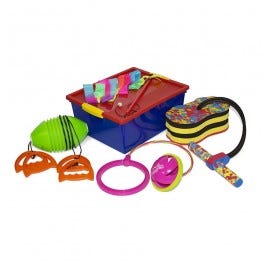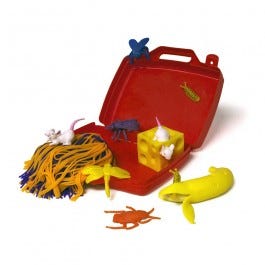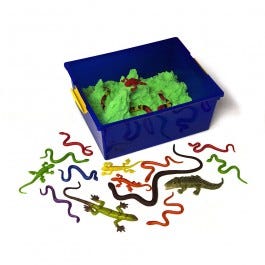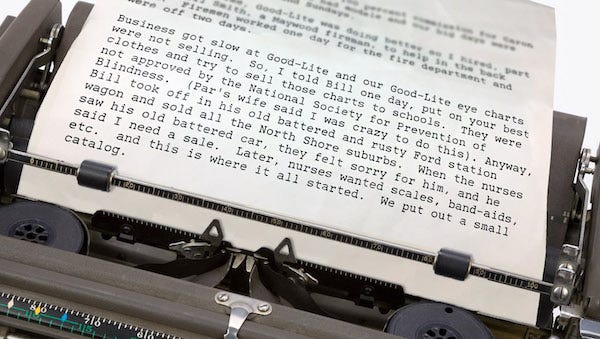Happy 100th Birthday Occupational Therapy!
- Apr 6, 2017
- 0 Comments
by Dr. Raymond Heipp
Any birthday is a cause for celebration.  But a 100thbirthday, that is a cause for ceremonial jubilee! I was honored to attend the 100th birthday celebration for occupational therapy at the American Occupational Therapy Association (AOTA) Conference this past weekend in Philadelphia. It was an amazing time that highlighted the role occupational therapy has played in our lives during the past millennium.
But a 100thbirthday, that is a cause for ceremonial jubilee! I was honored to attend the 100th birthday celebration for occupational therapy at the American Occupational Therapy Association (AOTA) Conference this past weekend in Philadelphia. It was an amazing time that highlighted the role occupational therapy has played in our lives during the past millennium.
Occupational Therapy is often misunderstood by the public at large because it is lumped into categories which contain other types of therapy. By its very definition, occupational therapy is a therapy which “helps people across the lifespan participate in the things they want and need to do through the therapeutic use of everyday activities (occupations).” (AOTA Website)
It is a therapy that is good for everyone and can assist in daily life practices. As a former school administrator, I am a big proponent of OT/Sensory breaks in classrooms every day. It is amazing how a brief exercise can increase focus and attention for all of our students, let alone those with differing abilities.
I had the opportunity to speak at length to a highly-respected OT, Susan Wilkerson, or “Miss Sue” as her clients refer to her. We spoke about some of the changes that had occurred in OT over the years. These changes are partially due to a better understanding of the ways in which the human body processes sensory input, and partially due to a stronger level of respect being placed upon the field. OTs have a strong focus on making sure that individuals are able to handle the daily tasks which are encountered each day. During our discussion, I focused on the sensory side of things with her. This is an area which is often overlooked in our classrooms.
“Miss Sue” has recently developed a series of kits that really bring occupational therapy to a new level of engagement in the classroom. Although all of them are extremely well-designed and thought out for the classroom, I wanted to focus on three that made an impression on me. All three of these kits would be items I would encourage my teachers to use, no matter the grade level or the course.

I was amazed at the School Health Bilateral Brain Breaks Kit. This kit includes items that one would normally see out on a playground. For example, the “Skip-a-Long” is a toy placed on the ankle that encourages jumping and coordination. I remember seeing similar items on playgrounds as far back as the 1960s. And, here they are again playing an important role in getting both sides of the brain to “talk” to each other. I watched in awe as a few of the younger OTs and a couple of children visiting the conference immediately began using it and had fun.
I did not try the Skip-a-Long for fear of a hospital visit, but I did try the “Bungee Jumper” from the same kit. It is basically a foam base and bungee version of a pogo stick. That concept, again, is something that has been around for a long time. Sue shared with me some of the research behind that particular item and one of the ways that this kit can be effective in the classroom. The research demonstrates that a student fighting with attention issues who uses the “Bungee Jumper” for five minutes will bring focus back to their minds for upwards of two hours! Those of us who have worked with students facing attention issues know that five minutes of focus is difficult, but two hours of focus is amazing!
 Another kit that fascinated me was the School Health Yucky Lunch Kit. The small plastic “Lunchbox” holds a piece of “Cheese” with “Mice” crawling through it, a “Banana” with “Banana slugs” in it, “Pasta,” and a few other “Creatures” that would make any adult cringe! But how it captures the attention of students! The activities include pushing the mice through the cheese and placing the slugs in various locations on the banana. While these activities may seem “gross,” they are actually “fine” when it comes to motor activities. (Okay, sorry to my OTs who got that lame joke!) Finger dexterity, motor planning, fine-motor skills, and varied sensory input are just some of the actions occurring while children play with this kit.
Another kit that fascinated me was the School Health Yucky Lunch Kit. The small plastic “Lunchbox” holds a piece of “Cheese” with “Mice” crawling through it, a “Banana” with “Banana slugs” in it, “Pasta,” and a few other “Creatures” that would make any adult cringe! But how it captures the attention of students! The activities include pushing the mice through the cheese and placing the slugs in various locations on the banana. While these activities may seem “gross,” they are actually “fine” when it comes to motor activities. (Okay, sorry to my OTs who got that lame joke!) Finger dexterity, motor planning, fine-motor skills, and varied sensory input are just some of the actions occurring while children play with this kit.
The last kit I want to speak of here is the School Health Sensi-Desert Kit. This kit was a hit with almost every OT who stopped by to visit Miss Sue. The specialized sand along with the lizards and snakes who “live” in the sand create a unique feel for those sticking their hands into it. The sand is not the kinetic sand or even real sand as some might expect. It is actually a specialized sand that feels more like soft earth or wet sand without as much coarseness. It was amazing to see so many of the therapists who did not want to stop playing in this sand as it gave positive sensory feedback. With all of these kits, School Health has included the EdTeam Action Guide™. This guide contains creative educational and therapy ideas in language, fine motor strength, coordination, gross motor movement, balance, early concepts, and more - all written by Miss Sue. The goal is to create an environment where anyone can use the kit to its greatest advantage with the students.
Raymond T. Heipp, Ph.D. is a 25+ year veteran of administrations and classrooms for students with differing abilities. He has designed many support programs for various schools and facilities. And, his expertise in assistive technology has enabled him to create updated approaches when working with students and educators. Dr. Heipp firmly believes that everyone, no matter what their ability, has a voice (or spirit) and deserves a chance to succeed. He suggests that we never doubt their abilities!

